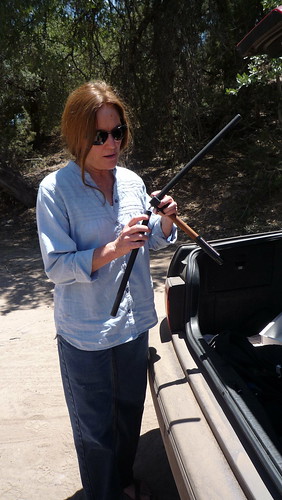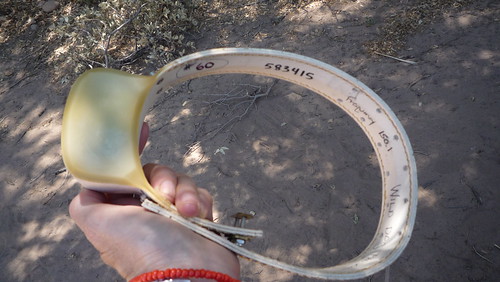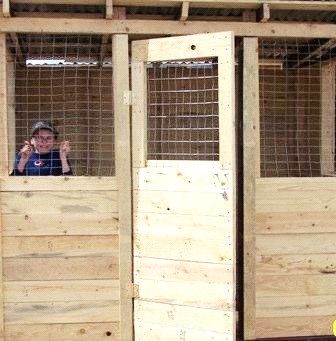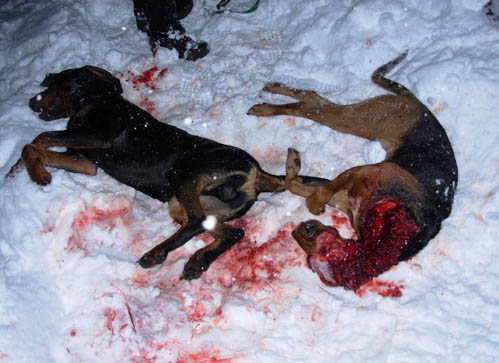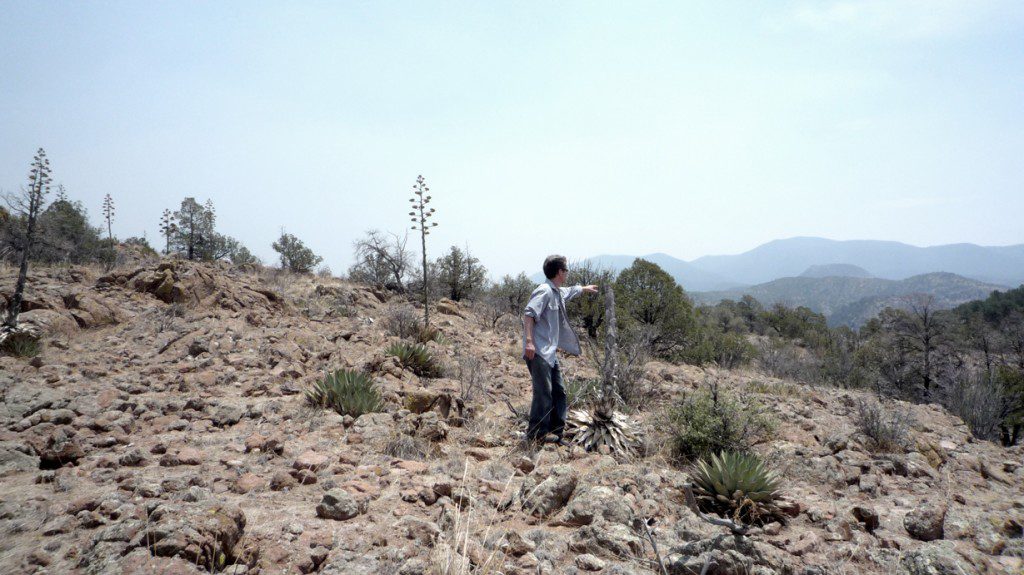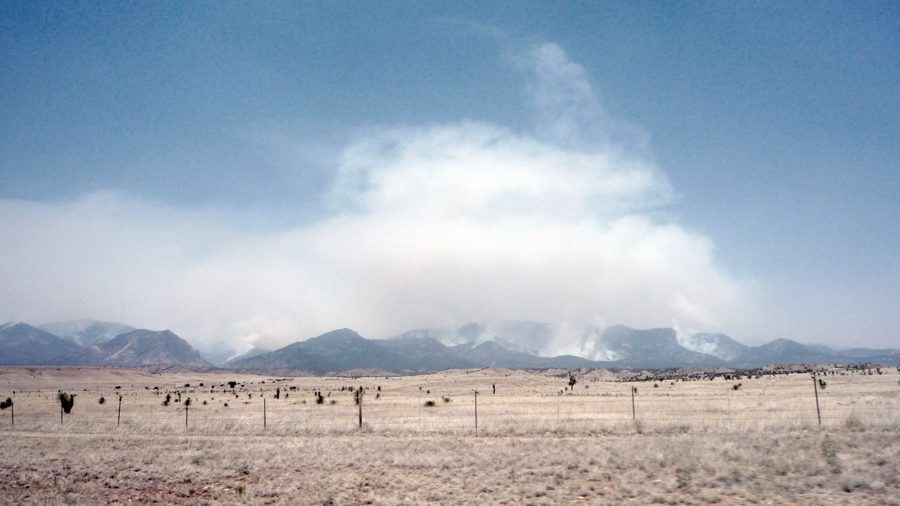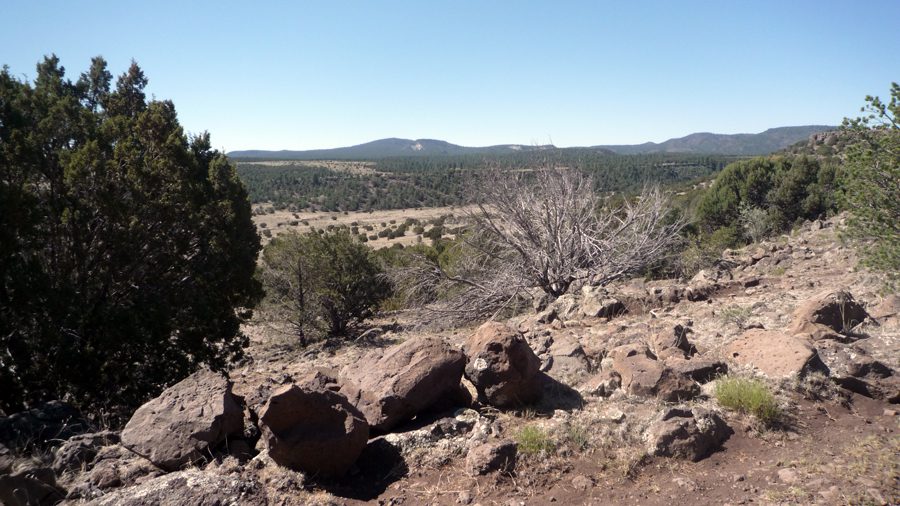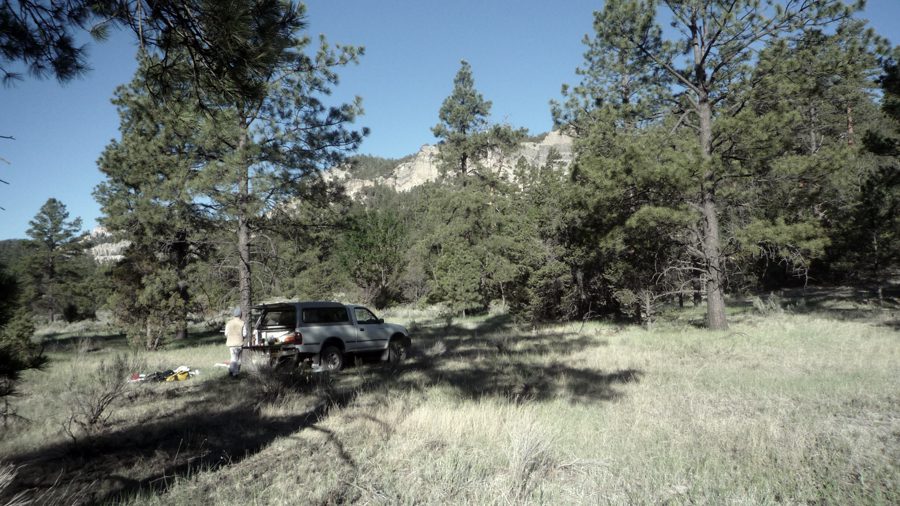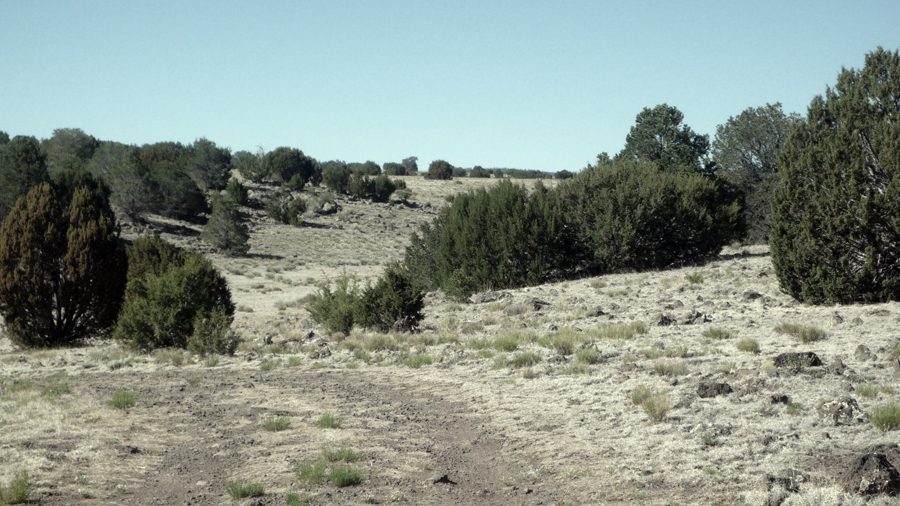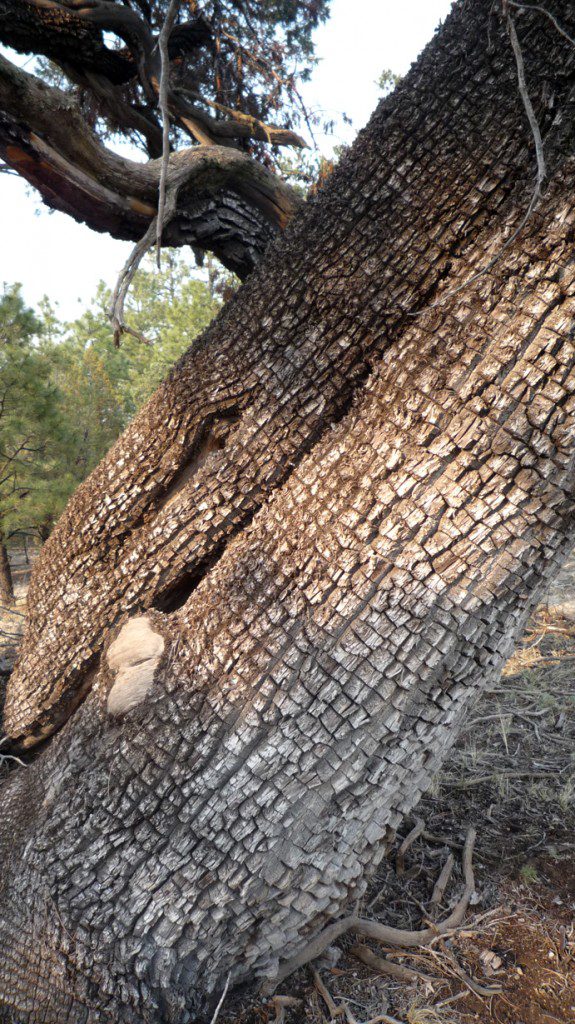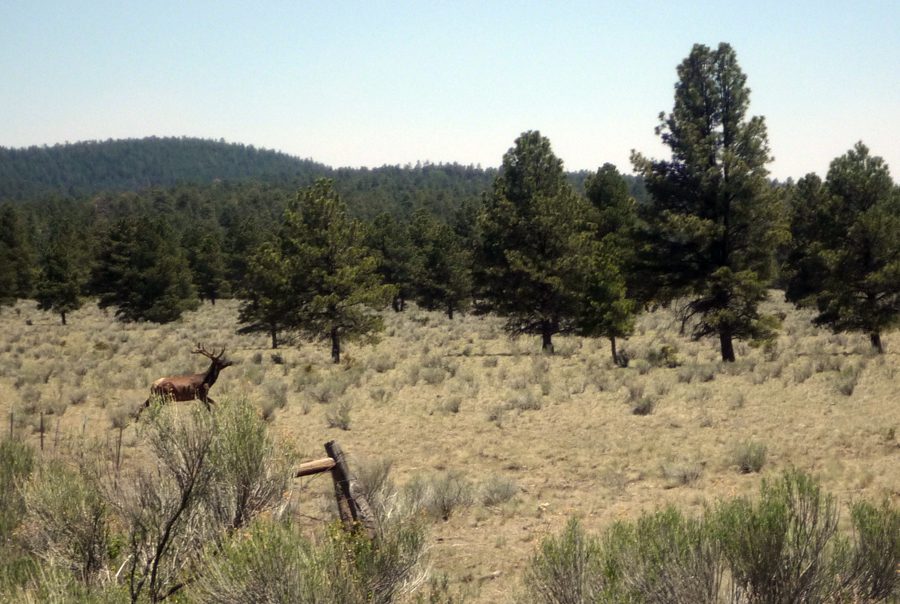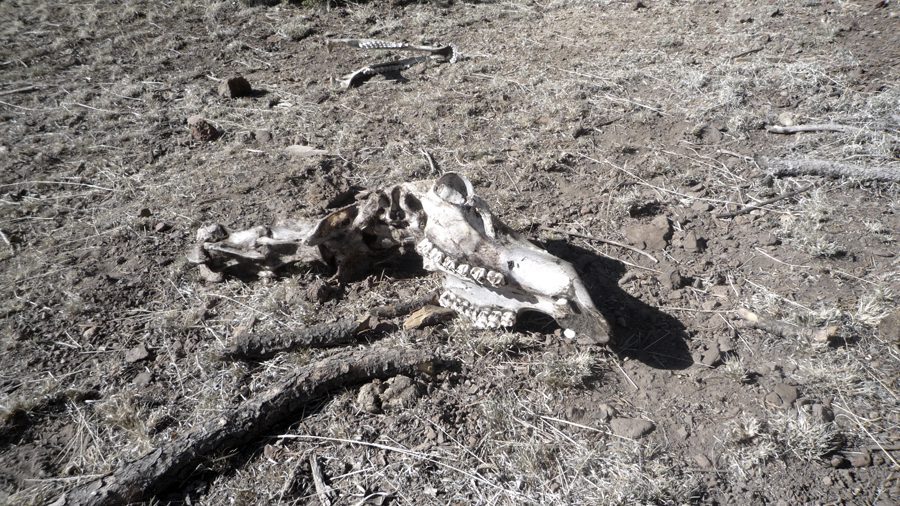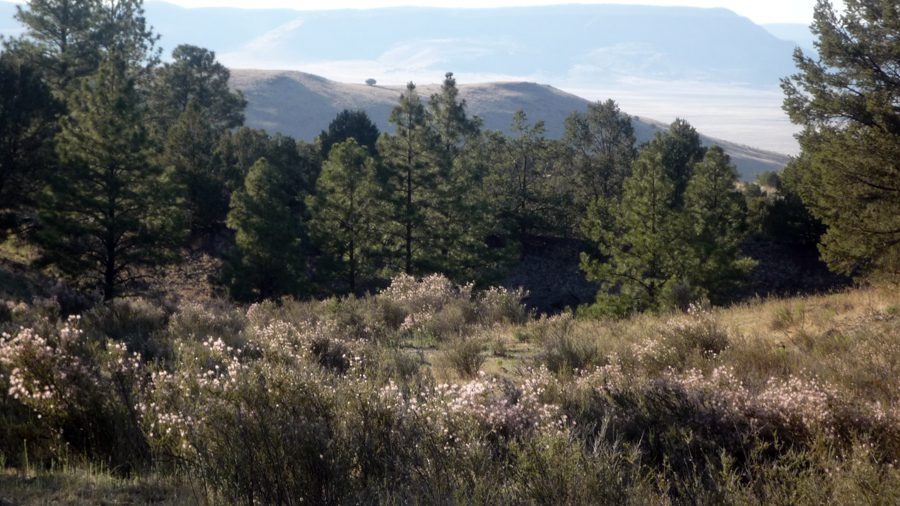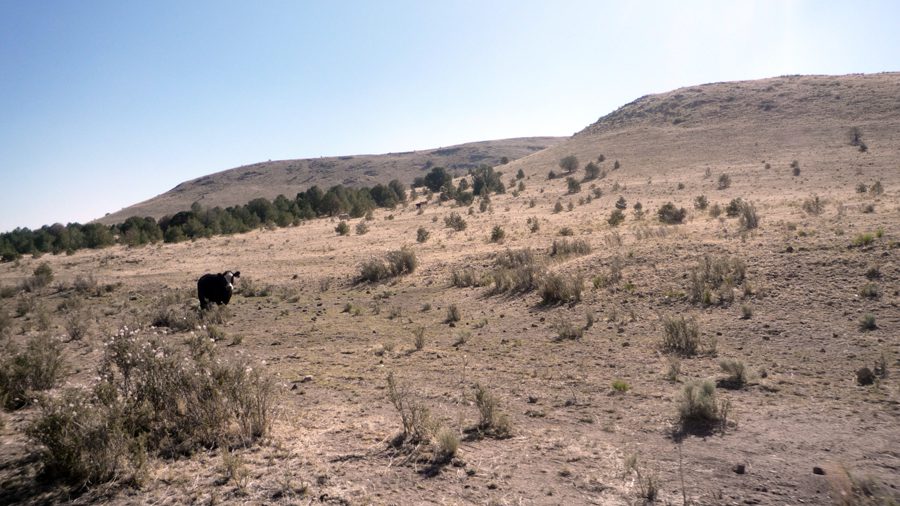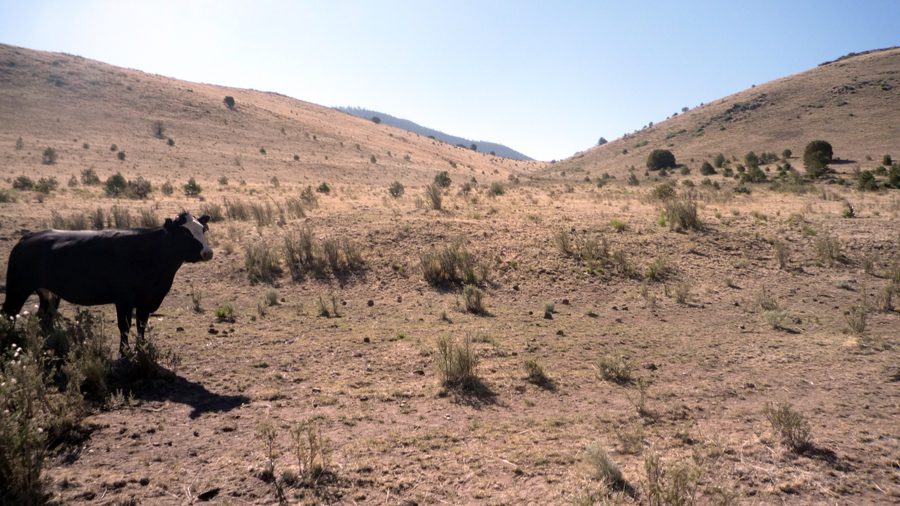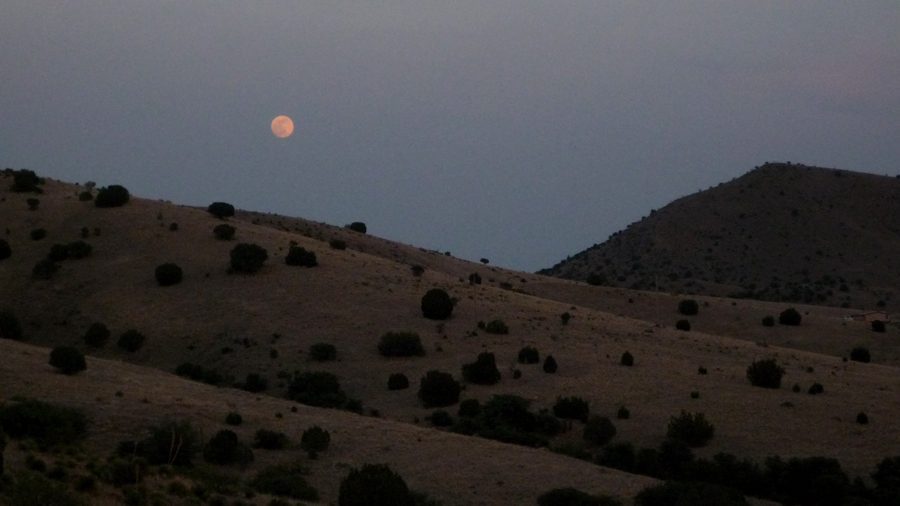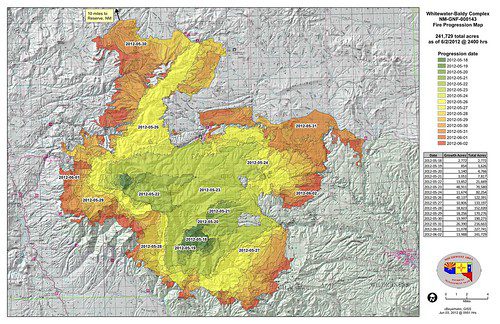Research Journal
-
-
June 12, 2012
wolf-proof shelter
Tags:Near Reserve, Catron County (Gila)

wolf-proof coop style shelter, Rexerve, NM Two Views, from Bowhunting,net
Living with Mexican Wolves and Liberal Press
THE EDITORIAL:
Afraid of the big, bad wolf
By Walter Rubel
wrubel@lcsun-news.comIt appears as if members of the New Mexico State Game Commission based their decision on the Mexican Wolf Reintroduction Program on what was in the best interests of members of the New Mexico State Game Commission.
The commission voted unanimously Thursday during a meeting in Las Cruces to discontinue a partnership with the federal government on the program that has dated back to 1999.
“We have been keeping peace between all people,” Commissioner Thomas Dick Salopek said. “So, you know what, if both sides are unhappy, then let s suspend it and let the federal government do it. I am frustrated at both sides, especially with the federal government.”
To some extent, I can understand. Having spent time talking to passionate advocates on both sides of the issue, I can attest that they can flat wear you out. But, that comes with the job of being a game commissioner.
The decision won’t have any real impact on the program, said Tom Buckley, a spokesman for the U.S. Fish and Wildlife Service. Opponents of the reintroduction program won the battle, but as for the war … the wolves will remain.
“The program won’t change,” Buckley said. “Its unfortunate that they determined at this time to step back from the program, but we will still will work toward Mexican wolf reintroduction. It’s our mandate.”
I can understand the economic impact wolves and other predators pose to local ranchers, and why they would oppose the reintroduction program. It’s the hysteria I have a hard time with, the notion that murderous gangs of wolves are roaming western New Mexico and eastern Arizona looking for small children to kill and eat.U.S. Rep. Steve Pearce, R-NM, fed that hysteria in a press release praising the Game Commission’s decision.
“New Mexicans know that to protect the wolf, we don t have to harm livestock and risk the lives of our children,” Pearce said.
In 2007, Catron County went so far as to build wolf-proof school bus shelters. How many young children were victims of wolf attacks before they went to such extremes? Well, none.
An article at that time by the Albuquerque Journal cites a study by the Office of the Medical Investigator, which found there were 63 animal-caused deaths of humans in New Mexico from 1993 through 2004. The vast majority of those, 43, were caused by interaction with horses. None were caused by wolves.
In fact, the only evidence the killer-wolf crowd can point to is an incident in northern Saskatchewan, Canada. A coroner’s inquest found that a 22-year-old was killed by wolves, though some biologists disputed the finding. If true, it is the only known case in North America in the last 100 years. (editors note: Wolf Attack)
By contrast, about 40 people a year die from being stung by bees, wasps and other insects. I don’t suppose they’re raising money to construct bee-proof bus stops.
We’re all familiar with the fairy tale of the homicidal wolf who “gobbles up” Granny, “lets out a satisfied burp” and then dresses in her nightgown in a ruse to deceive and then eat the innocent, young Little Red Riding Hood. It’s a scary story that has given children nightmares for generations.
But it’s just a fairy tale.
Walter Rubel has been a newsman for more than 25 years and is managing editor of the Sun-News. He can be reached at wrubel@lcsun-news.com.
THE RESPONSE:
Living with Mexican Wolves and the Liberal Press.
In writing his article, “Afraid of the Big, Bad Wolf,” Mr. Walter Rubel does not seem to have researched any of the documented damage caused by Mexican Wolves. It appears his biased article came directly from his personal agenda, rather than the facts. I felt it necessary to provide documented facts concerning the Mexican Wolf.
Catron County has been documenting wolf-human, wolf-animal interactions since April 2006. This year alone, there have been 16 documented confirmed wolf-livestock depredations, 1 probable depredation, and 4 confirmed injuries. However, Mr. Rubel conveniently omits any mention of this serious problem for local family ranchers.
The above photo shows what some rural New Mexico residents have had to revert to, in order to protect their children, waiting for the school bus, from ever bolder Mexican gray wolves.Since 2006 to the present, there have been 140 Wolf-Human incidents and 240 Wolf-Animal incidents, for a total of 380 incidents. Fifty percent of wolf interactions were on private property, indicating Mexican wolves are highly habituated and lack an avoidance response to humans, thereby posing a major threat. Habituated wolves seek out humans and human use areas. They are bold and come to homes where children play. The US Fish and Wildlife Service supplementally feeds the wolves all the time, including right now, causing the wolves to become further habituated by food conditioning.
Bus stop shelters were built with donated materials to protect school children after two children were followed home by wolves after they got off the school bus. Wolves were also documented at the elementary school by the swing set. Sheriff Shawn Menges had deputies on guard during recess while the US Fish and Wildlife Service John Oakleaf tried to trap the un-collared wolf.
Catron County should be commended for taking a proactive stance to mitigate wolf-child interaction. Wolves do not have to bite a child to cause damage. Psychological trauma, ‘Post Traumatic Stress Disorder’ has been documented in our children from wolf interactions at homes. Wolves attacking and killing family pets in front of children is horrific and unacceptable. Wolves were documented 23 times at one home where a 14 year old child lived. How many times would you tolerate a dangerous and threatening predator lurking near your home? I read that when a mountain lion recently moved into El Paso, a nearby school was placed on lockdown, and the animal was immediately shot and killed. Why are residents of Catron County expected to tolerate such danger when no one else will?
The Catron County Commission will not allow our children to be collateral damage in this project. Think about your children: you expect and demand 100% protection for your children where you live, yet the US Fish and Wildlife Service has taken a position to allow habituated wolves near our homes, putting our children in harms way.
A comparability study of wolves denning in calf/yearling core areas show that five family ranchers lost 653 more head of cattle than before the wolf was introduced, with a monetary loss of $381,198.50. Two of the five family ranchers went out of business and had to sell off their ranches. One ranch did not re-stock their ranch in 2010 due to wolf depredation losses. Compensation to family ranchers has been virtually nonexistent and does not reflect the actual losses; there has been no compensation to Catron County government for reduced tax revenues and lost jobs.
Wolf-caused chronic stress in cattle is produced when wolves are killing in a herd. The effects are decreased pregnancy rates-open cows, pre-mature birthed calves, abortion of calves, weak calves, loss of body condition, weight loss, immune suppression, increased susceptibility to disease. These losses are beyond compensation standards and are ignored by the US Fish and Wildlife Service but attribute to major financial losses to family ranchers.
Many of those making our decisions and affecting public opinion have the luxury of living outside of wolf country. Mr. Rubel seems to think that since no children have been attacked or killed, there is no threat. I hope the above information will help people understand the terror we live in. I hope, above all, that our voices will be heard before it is too late to prevent such a horrible outcome.
Thank you
Glyn Griffin
Catron County Commissioner
Reserve, N.M. 87830Jess Carey
Catron County Wolf Investigator
Reserve, N.M. 87830 -
June 12, 2012
3 days in the Gila ecosystem
Tags:I wrote this late last week, and thought I’d clean it up, but I’m clearly not going to.I have since met more people and read more documents, accounts, and heard more anecodotes, and I am not an expert nor beholden to fact checking this “research.” The more I know, of course, the less I know. I’ll fall down and never get up. Call it a trip onto the land and be done with it…June 8. I just got back from four days off line, getting an in depth introduction to the Gila ecosystem – on the road, on foot, and in the field (literally) – with Michael Berman, a man I’d describe as a Cy Twombly of environmentalism. It’s the way his narratives unfold. It’s a set of tangles he knows intimately and that he is capable of incising into the imagination. Nothing is simple, he will not simplify it. You need to be there for the long haul: that may be several swirling hour-long tales, with variation, of uncontrolled burns in the forest, or the failures and successes of riparian habitats. Better yet if you have decades of parallel experiences to argue and deconstruct. He’s a long-term, hardcore, self-designated “enviro” and photographer, whose images mark his interactions and observations with the Chihuahuan desert and grasslands that occur in time, over time, and with emerging complexity and subtlety.I don’t claim to know much, but I know a lot more than I did 5 days ago. How to read a grassland: Are there 2 species or 10? Are there seed heads? Are the river banks bare? Are all the cottonwoods along the banks the same age because a rancher or forest service official let the land rest for a year or two at some time in the past, and now are otherwise chewed up — “nuked” he’d say? The risks of the invasive tamarisk. What creates an arroyo? How the forest is parceled. The regulatory differences between Wilderness, Forest Service, and BLM. How public land permits are administered, sold, and penalized (or not).How to tell the difference between mountain lion and canine prints (you can draw an “x” between the four toe pads in canids). The shine on an elk hoof imprint on the sand when it’s fresh. What a greenline is along the river, and why cows don’t want to move, even risking starvation. What is fallacious about the arguments made regarding the success of cattle grazing on desert ecology, and how all other concerns (endangered species, grass ecology, riparian) are always going to be second. What constitutes 40% utilization on leased public land allotments and how is it proven? What is a piñion push? Predators are only useful if shootable.We didn’t encounter any wolves, but saw lots of mountain lion and bear tracks, lots of elk, antelope, and of course moving meat (cattle).We went north from Silver City into Catron County past Glenwood, Reserve, and Luna.Catron County has a reputation. It’s vast, with 3000 people. It has some tough commissioners, and it’s unclear whom they serve, but they have their positioning down pat, and I have heard the same tropes repeated in many texts and by several people. Catron has passed some interesting resolutions: for instance, all men (or heads of family) should be armed when in public. The dominant voice is anti-wolf. A rancher has built a wolf-proof shelter for his children to wait for the school bus. It is a very nice shelter, and frankly: better safe than sorry. If a child gets hurt by a predator, guarantee that a full drama and battle will unfold.We headed up onto small county roads some all-weather and all dirt, past Spur Lake Basin (a vast grassland) to Bill Knight spring where we camped the first night.The fires are burning the core of the Gila Wilderness. Just waited in line at a pubic toilet with a crew of Hopi Nation Firefighters. How contracts are given. How local communities are financed by the fires. How rehab of fire is structured. How fires were suppressed. How large timber was cut, how ‘dog hair’ trees come back and provide fodder. How all the big mills are gone. How now, 4000,000 acres will burn. How this will be good in some ways for the forest,. How there’s a chance to “start over.”
The fires should burn, even I knew that, they need to burn at this point bad once and for all, and then not so bad in the future. It’s good for the ecosystem, It’d even be good for cattle, in case they feel excluded from this discourse.
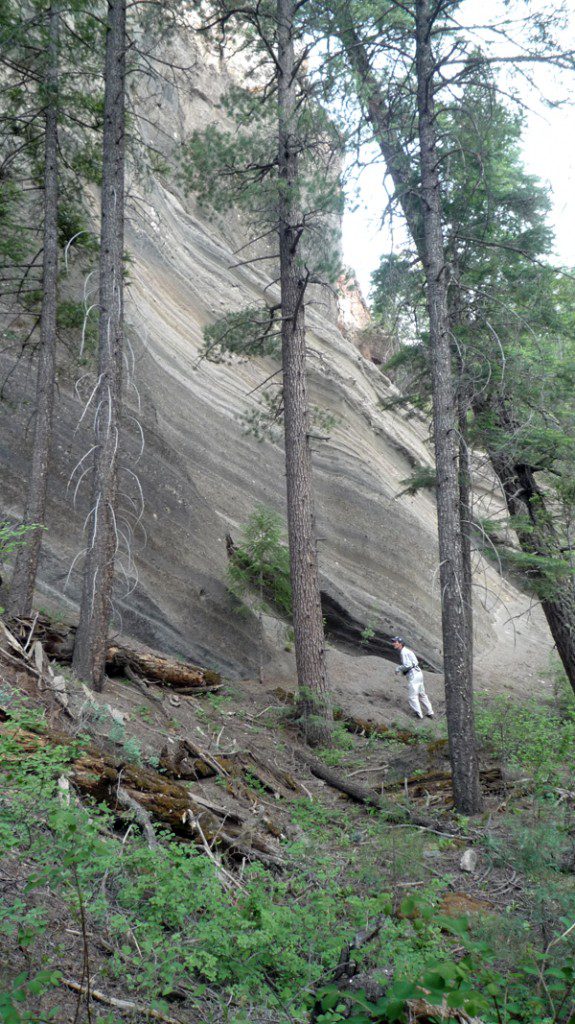
Canyon up past Bill Knight spring 
Indian paintbrush growing out of cow shit And, uh, the wolves.
I feel sorry for them.
What is prime wolf habitat?
This is what I am gathering:
It’s the same as the sort of habitat that cattle and elk like. Open areas. Think of a long open runway with forested patches on either side. Nice grass lands, good vistas to survey. Clusters of hiding areas but not too dense. Not too rough, or a pack can’t run. Some release areas for the wolves are occurring in habitat they might not select. They hope the female is already pregnant, and will want to den as soon as possible. They are often released in a netted “pen,” which they will chew their way out of. What happens in the mind of wolf when s/he is released?We left the Spur Lake Basin area to head east and a bit south, when we saw a pick up truck stopped at the T where the dirt road met a paved one. Michael thought it might’ve been the rancher, but it was Jess Carey, Catron County’s Wolf Incident Investigator. He was out on the allotment checking up on a cow predation. Bear.
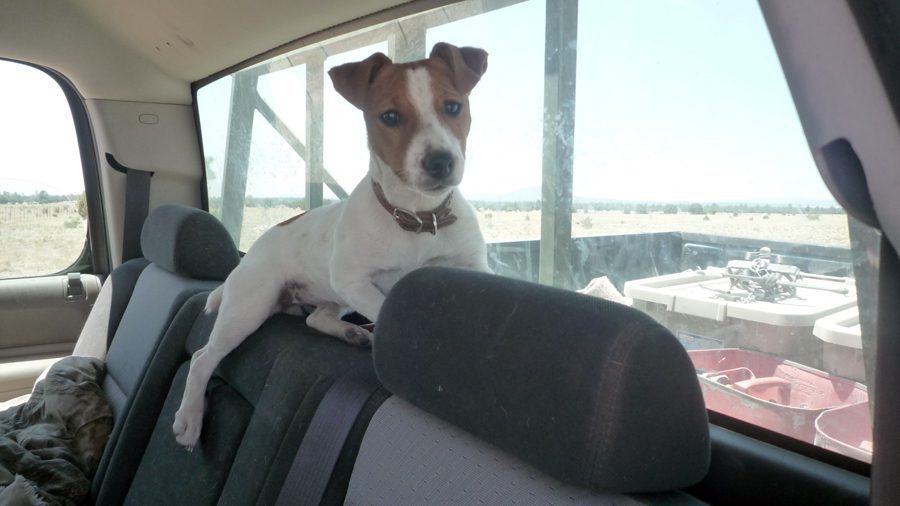
Jess Carey's little Jack Russell There is something about the wolf reintroduction program that feels like a video game.
Pick them up, put them down, uh oh, 3 strikes you are out, take you back out, move you, power you up with some supplemental food, oh – you got killed, who killed you. Now, sneak in that den and inoculate your wolves. and so on. What’s the hold up? Where are the replacements???I apologize. There are animals whose lives are at stake. There are serious measures people worked hard on (see the Mexican wolf management SOP guidelines from Fish and Wildlife. I am sure people are doing their best to respect the highly constructed and constricted chalenges of managing an ‘experimental, non-essential” population of animals.
The non-essential experimental population designation for Mexican wolves allows for greater management flexibility to address conflict situations, such as livestock depredations or nuisance behavior, than if wolves had retained the fully endangered designation. (FWS)
To give some idea about the language, participants, polarizations, I’m including some excerpts from a few local texts.
From the Federal Register, August 2010.
F + W was petitioned to relist the Mexican wolf as a distinct subspecies, which would change its status in the goings-on.DEPARTMENT OF THE INTERIOR Fish and Wildlife Service Endangered and Threatened Wildlife and Plants; 90-Day Finding on a Petition To List the Mexican Gray Wolf as an Endangered Subspecies With Critical Habitat. AGENCY: Fish and Wildlife Service, Interior.
AGENCY: Fish and Wildlife Service, Interior.
ACTION: Notice of petition finding and initiation of status and critical habitat review.The Mexican wolf was listed as an endangered subspecies on April 28, 1976 (41 FR 17742). The gray wolf species (Canis lupus) in North America south of Canada was listed as endangered on March 9, 1978, except in Minnesota where it was listed as threatened (43 FR 9607). This listing of the species as a whole subsumed the previous Mexican wolf subspecies listing, although it stated that the Service would continue to recognize valid biological subspecies for the purpose of research and conservation (43 FR 9607). We initiated recovery programs for the gray wolf in three broad geographical regions of the country: the Northern Rockies, the Great Lakes, and the Southwest. In the Southwest, a recovery plan was developed specifically for the Mexican wolf, acknowledging and implementing the regional gray wolf recovery focus on the conservation of the Mexican wolf as a subspecies. The 1982 Mexican Wolf Recovery Plan recommended a two-pronged approach to conservation that included establishment of a captive breeding program and reintroduction of wolves to the wild (Service 1982, p. 28). In 1996, we published a Final Environmental Impact Statement, ``Reintroduction of the Mexican Wolf within its Historic Range in the Southwestern United States,'' after assessing potential locations for the reintroduction of the Mexican wolf. On April 3, 1997, the Department of the Interior issued its Record of Decision on the Final Environmental Impact Statement, and on January 12, 1998, a final rule, ``Establishment of a Nonessential Experimental Population of the Mexican Gray Wolf in Arizona and New Mexico'' (63 FR 1752), was published and established the Mexican Wolf Experimental Population Area in central Arizona and New Mexico, and designated the reintroduced population as a nonessential experimental population under section 10(j) of the Act. In March of that year, 11 Mexican wolves from the captive breeding program were released to the wild.Back to Jess Carey at the crossroads, with our two pick up trucks side by side, baking in the hot sun. expressed his feeling of betrayal by the Fish and Game Feds, because they promised they’d take a wolf out of play if it hit livestock three times. But they stopped. And then everyone found out that the Feds were doing what’s called “diversional feeding” which is supplementing the wolves’ diet with roadkill to pull them away from any livestock temptations.
There are 50 or so collared wolves on the ground, and perhaps another 50 who are their progeny. No new wolves are being introduced in the Recovery Area, have not been for three years, and will not be for the near future until the Recovery Plan is re-authored. In the meantime, there is “inbreeding depression” and the wolves health suffers. They also suffer from parvo ,a dog-borne disease. So many issues, so much interference. There are 400 wolves in the captive program.
In 2010, then-Governor of New Mexico Bill Richardson issued an executive order banning the use of traps within the Recovery Area:
EXECUTIVE ORDER 2010-029
TEMPORARY BAN OF TRAPPING IN THE
BLUE RANGE WOLF RECOVERY AREAWHEREAS, the Mexican Gray Wolf is the smallest, rarest, and most genetically distinct subspecies of the Gray Wolf;
WHEREAS, the Mexican Gray Wolves that once widely roamed New Mexico, Arizona, Texas, and the Republic of Mexico are now nearly extinct, suffering from the results of human development, reduction in habitat, and hunting;
WHEREAS, the Mexican Gray Wolf was listed as endangered under the federal Endangered Species Act in 1976, and all known wild Mexican Gray Wolves were caught and put into a captive breeding program;
WHEREAS, the Gray Wolf species, of which the Mexican Gray Wolf is a subspecies, was listed as endangered under the New Mexico Wildlife Conservation Act in 1976;
WHEREAS, in 1998, the U.S. Fish and Wildlife Service reintroduced the Mexican Gray Wolf to a portion of its historic range in New Mexico and Arizona within the Blue Range Wolf Recovery Area (“Recovery Area”), which is comprised of the Gila and Apache National Forests;
WHEREAS, the U.S. Fish and Wildlife Service’s goal was to restore at least 100 free-roaming Mexican Gray Wolves in the Recovery Area by 2005, but as of 2010, only 39 individual Mexican Gray Wolves are surviving in the wild;
WHEREAS, pursuant to the New Mexico Wildlife Conservation Act, the State Game Commission has enacted rules which make it unlawful for any person to take (defined as harass, hunt, capture, kill, or attempt to do so) any threatened or endangered species or subspecies in the State of New Mexico;
WHEREAS, under the New Mexico Wildlife Conservation Act endangered species may only be removed, captured, or destroyed with prior authorization by permit given by the Director of the Department of Game and Fish (“Department”) where necessary to alleviate or prevent damage to property or to protect human health;
WHEREAS, trapping and snaring activities occur in New Mexico within the Recovery Area even though such activities are negatively impacting the Mexican Gray Wolf, as traps and snares do not discriminate between Mexican Gray Wolves and the game animals intended to be taken;
WHEREAS, Mexican Gray Wolves may suffer injury or death while caught in a trap or snare due to dehydration, exposure to weather, or predation by other animals;
WHEREAS, in the last eight years, in the Recovery Area located in New Mexico, there have been six confirmed and three probable Mexican Gray Wolves that have been trapped, five of which have sustained injuries from traps or snares, including two Mexican Gray Wolves that had injuries severe enough to result in leg amputations;
WHEREAS, missing toes, claws, or other injuries can inhibit the Mexican Gray Wolves’ ability to catch prey and may actually increase the risk of livestock predation, as domestic livestock are easier to capture than native prey such as elk or mule deer;
WHEREAS, Mexican Gray Wolves require adequate prey and freedom from indiscriminate traps and snares to thrive in the Recovery Area; and
WHEREAS, tourism for watching the Mexican Gray Wolf has had almost no chance to develop in New Mexico, because the Mexican Gray Wolf population has not grown as planned.
NOW THEREFORE, I Bill Richardson, Governor of the State of New Mexico, by virtue of the authority vested in me by the Constitution and the laws of the State of New Mexico, do hereby order the Department of Game and Fish to carry out the purpose of the New Mexico Wildlife Conservation Act, which requires endangered species, including the Mexican Gray Wolf, be protected and direct the Department of Game and Fish to temporarily ban trapping in the portion of the Blue Range Wolf Recovery Area located in New Mexico. The ban shall:
1. Prohibit trapping by persons licensed to trap pursuant to NMSA 1978, Section 17-5-5 and youth under the age of twelve years. This prohibition should not affect the right of a resident to trap animals in order to protect livestock, domesticated animals, or fowl. The ban shall be in effect for six months starting on November 1, 2010, while the two studies described below are completed.
2. Prohibit all methods of capturing a furbearer on land or in water, including leg-hold traps, neck and leg snares, Conibear kill traps, body-crushing traps, natural and man-made cubby sets, and other methods of trapping specified in 19.32.2.10 NMAC. The New Mexico Department of Game and Fish and the government of the United States and its agencies are exempted from this closure if the Mexican Gray Wolves require capture for medical treatment, monitoring, or relocation.
I further direct the Department to undertake a study of the various types of traps and snares allowed in New Mexico and to determine the level of risk to the Mexican Gray Wolf associated with the various traps and snares. The Department shall then pursue appropriate regulations to allow trapping within the Recovery Area only by use of traps and snares that pose minimal risk of harm or injury to the Mexican Gray Wolf.
I further direct the Department of Tourism to undertake a study on the potential economic benefits of ecotourism related to recovery of the Mexican Gray Wolf in the Recovery Area.
THIS ORDER supersedes any other previous orders, proclamations, or directives in conflict. This Executive Order shall take effect immediately and shall remain in effect until such time as it is rescinded by the Governor.
Comments from Jess Carey regarding this 2010 trap ban:
It is obvious Gov. Richardson has enacted this trap ban on his way out and at the direction of the radical wolf recovery organizations and it was probably written by them also.
What a crock, almost all the trapping injuries to wolves have been done by the federal agencies involved in wolf recovery, not the trapping public…why..because they use #7 McBride wolf traps that have larger jaws than traps allowed by state law. These agencies are exempt of state law and do what they want.
The enviro’s are punishing the trapping public for what federal agencies are doing, why? Because these same enviro’s are against trapping, hunting, ranching, farmings, off road vehicles and or anything else that uses our natural re-newable resources.
We can only pray for a decent Governor, not one that walks and talks like Richardson with the same ol tune, fiddle and guitar…but one that will see through all the enviro hype and will protect the folks living on and using the land.
“KNOW” who you are voting for..everyone should be a one man army and campaign every person you meet.
Folks, the customs of life of the people’s of the Southwest are on the line and we need a change….or it will be lost forever!
Many people’s lives depend on your vote…Let us all band together and put decent people in office that will work and protect our way of life.
I don’t know about you, but I’m tired living at the direction of the environmental radical organizations…WE out number the enviro’s, all we have to do is focus and band together and vote as one.
The only way to beat them is by electing like minded candidates.
Best wishes
Jess Carey
Now NM has a new governor who is far more sympathetic to resource interests.
DAY TWO
COYOTE PEAK, Plains of San Agustin
Cliff Roses with seed heads forming Amount of land you need for a cow here:
Estimates vary from 90-200 acres per animal.Forage efficiency:
Both elk and cattle compete for the same types of forage of mainly grass and low browse (deer eat browse)
Elk:Cattle efficiency is 1:2.4 which means cattle need to eat almost two and half times as much browse to reach the same nutritional benefits.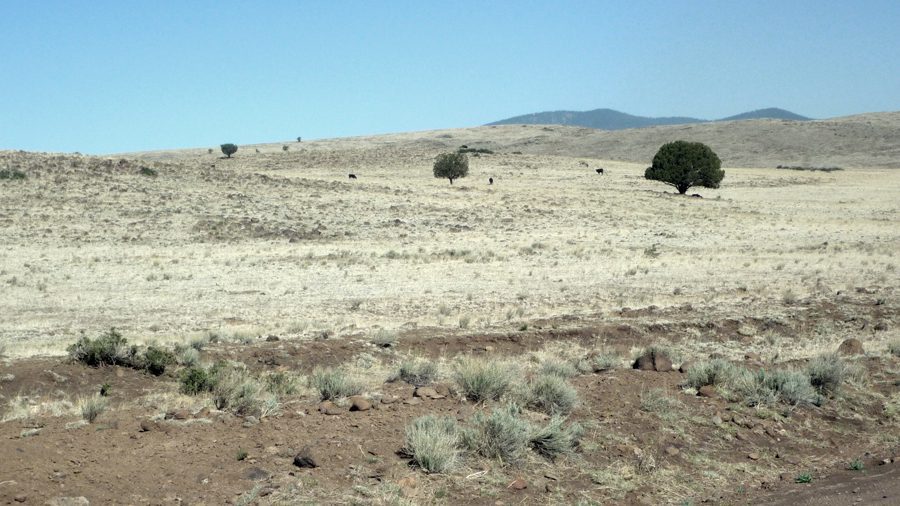
Beautiful landscape. Large piñon trees and grasses, although the ecosystem in most places we visited was severely limited to 1-2 species of grasses due to grazing. 
Forest Service land – looks so tame and park-like, but it isn't! An antelope way off in the distance. This forest is deep in Forest Service land, though it looks as tame as a ‘walk in the park.”
This is a fairly healthy forest, though with a lot of room for fire to move through here without a
catastrophe.
Here is a good article on fire ecology in this kind of forest ecosystem:
Ponderosa Pine Fire EcologyIn short, logging and fire prevention management led to more problematic forests with dense “dog hair” thickets and forest floor litter. You can see how a fire could sweep through, using the trees and litter as a kind of staircase to reach the really tall pine trees’ crowns. In open stands (which would remain open by periodic naturally-burning fires), the fires would cause minimal damage to the trees, but refresh the grasslands, stimulating new growth.
As a sidenote, I found this translation of Leviticus (VaYikra) 26:3 – 27:34. It’s not a Christian god speaking here, but an old, vengeful Jewish one. I’m not sure why this strikes the right ending chord, but it does.
I will send the wild animals among you, killing your children, destroying your livestock, and reducing your population, so that the roads will become deserted.
-
June 11, 2012
Mexican wolf is torn apart in political imbroglio
Tags:This is from the Denver Post, June 8:
Group alleges political meddling in wolf program
ALBUQUERQUE, N.M.—The effort to return the Mexican gray wolf to the American Southwest has been fraught with legal disputes, illegal shootings, livestock deaths and emotion. Now a watchdog group is questioning the integrity of key scientific findings related to the endangered animal’s recovery.
Public Employees of Environmental Responsibility filed a complaint this week with the U.S. Department of Interior, alleging that political meddling has threatened to lower the number of wolves required for recovery.
The group also contends the U.S. Fish and Wildlife Service suspended recovery planning in May in response to political pressure that followed the release of confidential documents to politicians and advocacy groups and concerns voiced by officials in Utah and Colorado about expanding the wolf recovery area to their states.
Jeff Ruch, executive director of the Washington, D.C.-based group, called the science behind Mexican gray wolf recovery a “political football.”
“The time for political negotiation comes after the scientific work is done,” Ruch said. “In this instance, Obama officials are attempting to improperly pre-negotiate the science to accommodate political partners.”
-
-
June 8, 2012
“ranches with wolves” mother jones
Tags: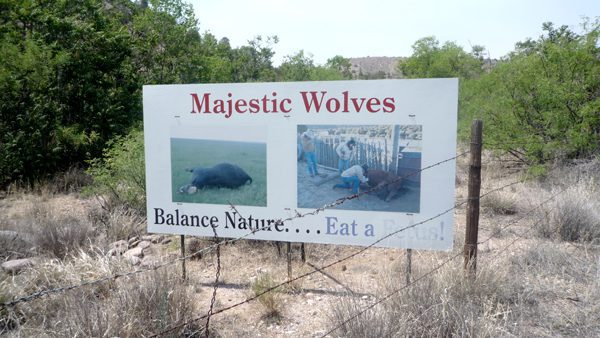
Anti-wolf billboard near Glenwood, NM There is a good article by Kiera Butler from April 2011 in Mother Jones, on the incompatibility of current dominant ranching practices in the SW with the wolves, and what ranchers might do to actually live in proximity to them. Arizona rancher Carey Dobson – his ranch is in the same contiguous Blue Range Wolf Recovery Area as the wolves being introduced in the Gila – is featured as a good example of the kinds of changes a rancher could make to reduce livestock predation.
Excerpt of article:
Dobson just wanted the wolves gone. But he reluctantly agreed to accompany Arizona biologist Chris Bagnoli to a workshop led by wolf-management experts in Montana, where ranchers and wolf defenders had begun working together. What Dobson learned there surprised him: Killing wolves that attack livestock doesn’t solve the problem. That’s because the offending animals have often passed along their knowledge. “You have to reduce the opportunities for wolves and livestock to interact,” Bagnoli explains. “That’s the only way to change pups’ behavior, since pups learn from adults.”
In 2007, Dobson and his wife began herding their livestock daily, and he installed electric fencing to keep wolves out. Although the wolf recovery program helped him with the details, the money came from two conservation groups: Defenders of Wildlife and the Mexican Wolf Fund. “Other cattle guys told me I was taking money from the devil,” says Dobson. “But you know what? It is really working.” With the new strategy, Dobson hasn’t had a single sheep kill, and only one calf has been taken. Bagnoli hopes that federal authorities will take note and improve programs to help ranchers give the humane methods a try.
Of course being willing to work with the Feds is an obstacle for many ranchers, who view the wolf as nothing but a Federal representative, and the tippy-peak of a mountain headed for a landslide, with regard to their own perceived land rights. On top of that, at least mountain lions have trophy value, and you are allowed to shoot coyote, bear or lion if they are predating your livestock. You are not allowed to shoot the wolves, and they are rather little besides, and don’t get those glamorous winter coats like their northern cousins.
Another excerpt:
On the surface, the ranchers seem to harbor undue anger over a few dozen limping lobos. But the wolves symbolize something bigger: a century-old debate over whether land is meant to be used by humans or preserved as wilderness. Roughly 170 ranchers live within the recovery area, many of them descended from pioneers who homesteaded the area in the 1800s. In 1905, Teddy Roosevelt declared the Gila a national forest, and the government took ownership. Today, the ranchers lease their land from the feds, and if they don’t follow the rules, they pay: Ranger caught your cow wallowing in the wrong part of the river? That’s a warning. Land looks overgrazed? Another warning—too many warnings, and you might lose your grazing permit. Most ranchers I spoke with said they feel harassed, even persecuted, by the government and environmental groups. “Their goal is to get us off the land,” a third-generation rancher named Hugh McKeen told me during an afternoon on his 11,000-acre spread. “The wolves are the last straw. They’re trying to get rid of us for good.”
You hear this a lot: The Feds are trying to remove the ranchers. Everyone is positioned in extremis: the same tropes are recycled with little variation. It seems to me that the patchwork of land that exists – what is private, what is public – really should change, meaning that everyone would have to participate in an enormous overhaul of a system of laws and usages that has been… well, patched together slowly and clumsily for over a century. Many people can’t trace their cowboy roots back to the homesteaded Territory days, but the myth and lifestyle (I have heard this word more here than in advertising and branding contexts) are such strong draws that it is very (hmm, easy? supple? tempting? self-justifying?) to don this mantle of historicity.
In addition, leasing and enforcement are not what they are on the books, the situations are far more complex than the article suggests.
And the wolf populations vary wildly from account to account: some say dozens, some say there are at least 50 uncollared wolves in addition to the 50 or so collared wolves in the Area. Some say the Feds undercount, in order to make their arguments. Many ranching advocates and even some environmentalists have complained about the Feds’ management.
In short – and I will absolutely repeat myself when I post about my last 4 days of traveling in the area – nothing is what it seems, and no one seems happy.
-
June 8, 2012
Climate change in the southwest
Tags:The Southwest, with its delicate desert ecology is even more susceptible to strain than other regions of the West. There are particular issues to the West that I am focused on: the intersections of ranching, wide open spaces, cowboy and freedom myths, concepts of wilderness, phenomena that encompass both acreage and lifestyle and are foundation to the image of America, but also some of our important resources including energy, ecology, and identity. I am witnessing all of these overlapping strains right now in the Gila: large scale fires; escalating tensions between ranchers and a variety of grassland and riparian conservation initiatives including any species protected under the Endangered Species Act; and of course, the motherlode issue which seems to contain all the others: wolf reintroduction vs cattle ranching.
There is a new (Dec 2011) book out by William deBuys: A Great Aridness: Climate Change and the Future of the American Southwest. deBuys posts about his book here. An excerpt:
“The news for the Southwest is not good: the droughts, fires, social strains and other stresses that lie ahead will challenge the region to the utmost. But the stories about how people came to understand those problems are endlessly fascinating, at least for me. In A Great Aridness I have tried to capture the “eureka moments” when the researchers I talked with glimpsed new and resonant insights – like when Tom Swetnam, who heads the Laboratory of Tree-Ring Research at the University of Arizona, and Julio Betancourt of the USGS made the link between forest fire frequency and the El Nino/La Nina cycle. Or when Mark Varien of the Crow Canyon Archaeological Center found a great kiva at Sand Canyon Pueblo and was able to visualize in a completely new way the pueblo’s final days. Or when Chris Milly or Richard Seager, separately, realized that their climate models were telling them something big.
The surprise for me in writing the book was to come full circle back to issues I had been working on for many years. Yes, we urgently need to cut back on greenhouse gas emissions, which for virtually all of us means a radical change in the way we live. But we also need to take care of business that has long been unfinished, like living within a sustainable water budget and restoring fire resilience to our forests. Climate change only makes more urgent the big task that has always been before us: to learn how to live in the marvelous arid lands of this continent without further spoiling them. It is an old challenge. We have already had a lot of practice, and we should be better at it. We can be.”
In Dec 2011, The New York Times reviewed deBuys’ book and another book by Andrew Ross, Bird on Fire.
An excerpt:
“Dr. deBuys puts it somewhat differently. History teaches that people have difficulty adapting to prolonged, extreme drought, he writes. Faced with it, they typically abandon efforts to cope and simply abandon their homes. That is why we call dry places deserts — they are deserted.
Is that tactic likely for today’s Southwest? No. But, he writes, any answers to the water challenge will require “strong social will and collective commitment.”
At the moment, though, the region’s politics tend to embrace the idea that collective action of any kind is inherently suspicious or even evil; government is the problem, never the solution; and regulation is the bane of economic growth.
These ideas are not in accord with Dr. deBuys’s prescription, which is to “get on with what we should have been doing all along, including limiting greenhouse gases.”
There is no silver bullet, he writes. “There is only the age-old duty to extend kindness to other beings, to work together and with discipline on common challenges.”
Dot Earth post about the book
NY Times post about the book.
Follow up:
Ari Phillips’ 2012 research project, Energy and Climate Change in the American Southwest
-
June 4, 2012
Very funny. kind of.
Tags:“What is the world’s shortest book?
The environmentalist’s book of jokes.”
– from writer Sharman Apt Russell’s blog, Love of Place.
She continues in her post “The Lighter Side of Global Warming:”
“For myself, I also feel an intangible loss. Humans are wired for continuity. We believe in culture, tradition, grandkids. We believe we are connected to the future. In the twentieth century, where I spent most of my time, we even believed in progress. We were destined to move forward into something better. Now I feel cut off. Disconnected. The future is no place I want to go.
As Woody Allen wrote, ‘Mankind faces a crossroads. One path leads to despair and utter hopelessness, the other to extinction. Let us pray we choose correctly.’”
-
-
June 3, 2012
Against eliminating species
Tags:I just read this passage written by Harley Shaw, in the 2002 introduction for The Wolf in the Southwest, the Making of an Endangered Species (1983) by David E. Brown. Shaw is a research biologist specializing in mountain lions in SW NM:
“Eliminating species leads to intellectual dead ends. Once a creature is gone, we no longer have reason to understand it. Our world becomes simpler, and our minds simpler with it. Problem-solving is an open-ended activity. Interacting with a species provides a means for intellectual growth, eliminating it simply leaves another blank spot – on earth and in our minds.”
